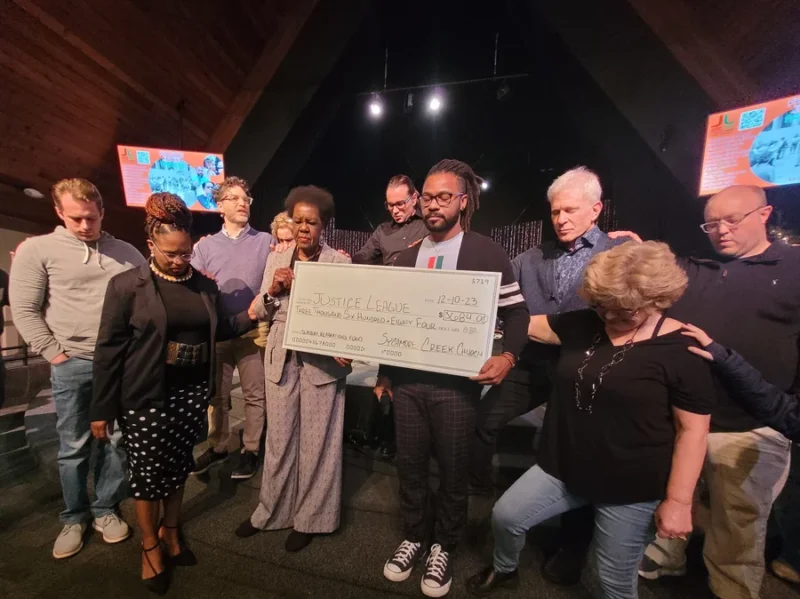A Michigan grassroots effort is raising reparations, while the government lags
Share
Explore Our Galleries
Breaking News!
Today's news and culture by Black and other reporters in the Black and mainstream media.
Ways to Support ABHM?
By Sophia Saliby, NPR

The year 2020 was a turning point for Lansing, Michigan resident Willye Bryan. Between the racial reckoning following the murder of George Floyd and the health disparities that hit the African American community during the pandemic, she knew it was time for action.
“You start with slavery, which is the original sin, and it has left an aftermath of destruction in its path,” Bryan said.
The answer for Bryan was for what she calls the debt owed to African Americans to be repaid through reparations.
She started at her church, First Presbyterian Church of Lansing, a predominantly white congregation. Pastor Stanley Jenkins remembers when Bryan first brought it up.
“My first reaction was, ‘Well, that’ll never work.’ And then immediately, I said, ‘Let’s do it.'”
Most of the church stood behind them, pledging $100,000 over the course of 10 years. Individual congregants gave $80,000.
“There was a sense that people were waiting, even if they didn’t know it, for somebody to take that first step,” Jenkins said.
The initiative became known as the Justice League of Greater Lansing. They visited many houses of worship in the area to explain their mission.
Keep reading to learn how the Justice League of Greater Lansing raised and determined reparations.
Reparations exist to close the wealth gap created by slavery and racism.









Comments Are Welcome
Note: We moderate submissions in order to create a space for meaningful dialogue, a space where museum visitors – adults and youth –– can exchange informed, thoughtful, and relevant comments that add value to our exhibits.
Racial slurs, personal attacks, obscenity, profanity, and SHOUTING do not meet the above standard. Such comments are posted in the exhibit Hateful Speech. Commercial promotions, impersonations, and incoherent comments likewise fail to meet our goals, so will not be posted. Submissions longer than 120 words will be shortened.
See our full Comments Policy here.